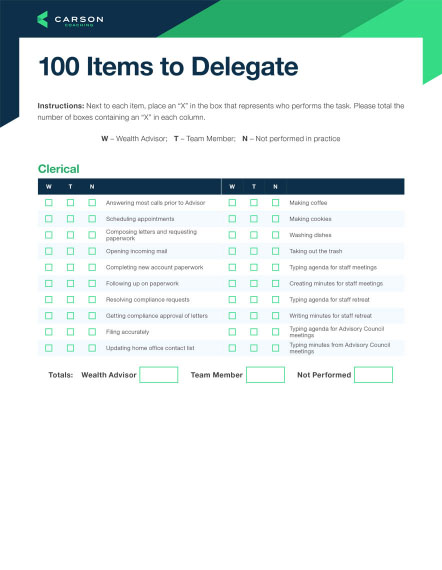This past Monday, Americans everywhere celebrated a national holiday which has become synonymous with the end of summer and the beginning of the school year. Our modern understanding of Labor Day is more closely related to barbeques than it is to its intended purpose – to honor the contributions of men and women to the workforce.
Reflecting on this history, I came to an interesting conclusion: we’ve come a long way, but we’re not there yet!
Before I can explain, a quick lesson is required. Labor Day began in the late 1800s as a response to a dismal chapter of American labor where men, women, and children worked 12-hour days, seven days a week to earn a basic living. Fast forward to 2016 and you’ll find the 122 years between the first and the most recent Labor Day festivities have seen improvements in workplace conditions and equality.
But, here’s the rub: Our society still faces the same obstacle as it did over a century ago. That obstacle is burnout.
A Perpetual State of Overwhelmed
In my role as an executive coach at Carson Group, I speak to many advisors each month. Their firms have a fascinating array of specializations and clients, but, at their core, these advisors are united in their role as a business owner. Just as they have similar goals, they certainly have similar hurdles.
This year, in particular, I’ve had many of these men and women reach out to me for help combating burnout. The general pressures of running a practice have been amplified by the changes in compliance and regulations currently affecting the profession. Day-to-day anxieties and frustrations limit the sense of joy they experience from their work and, in extreme cases, cause a complete shutdown.
Making matters worse, boss burnout has a way of trickling down the ranks. Teams feel confusion about the direction in which the business is headed when the short-term leaves no time for long-term strategic planning. Furthermore, advisor worries often impact personal lives, decreasing the amount of quality time spent with family and friends.
Now, a self-assessment.
- Do you feel there is too much on your plate right now?
- Do you find yourself checking emails at all hours of the day, working every day of the week, and bringing problems home with you?
- On Labor Day, did you go into the office?
If you’ve answered yes to any of these questions, it’s time you find a way to fight fatigue.
Step 1: Retrain Your Brain
While the human mind is a wonderful creation, it does come with some limitations. One of the drawbacks to our body’s processing system is the tendency to create a circle of self-fulfilling prophecy. This happens because we naturally develop our own conclusions about life and then find the evidence within our experiences to support those assumptions. The beliefs we form then become the cornerstone of our behaviors and our interactions with others.
Take, for example, a common product of burnout such as the lack of time to perform a certain task. If you believe you don’t have enough time to plan a client event, you will find reasons (like a mounting pile of paperwork or a full inbox of emails) to confirm this belief.
Before you know it, you’ve completely given up on the possibility of hosting an event, initiating a chain reaction which culminates in your team’s feelings towards events in the future.
I now issue you a challenge. What if you fought your first reaction and replaced it with an alternative conclusion? Slightly changing an outlook has proven successful in many of my coaching relationships. Applying this thinking to our original example, substitute the belief with “I am open and willing to host an event with the help of my team.” An advisor who believes this will find evidence to support how influential his/her team is and modify his/her behavior to delegate the key responsibilities of the event.
Retraining your brain is crucial to reducing feelings of negativity when stress levels have reached their peak. We each have the power to shift our viewpoint towards positivity, reducing the emotional consequences of fatigue.
Step 2: Redefine Your Boundaries
After you’ve addressed your attitude, it’s equally important to address the way in which you accomplish your work. For most, this is a matter of setting new parameters and expectations. Some examples of how you can reprioritize your schedule include:
- Disconnecting from email and technology during certain hours of the day to increase focus
- Dedicating uninterrupted time to certain responsibilities just as you would to client meetings
- Asking for assistance from your team, particularly to honor your scheduled, uninterrupted time
- Documenting how you spend your time to streamline and reorganize as needed
- Adding additional structure to your day
When you clarify your schedule, you tend to work like a well-oiled machine. You approach projects with energy and enthusiasm instead of stopping dead in your tracks, and you find it easier to break big goals into bite-sized tasks. Even a small step towards better balance will lead to great strides in realigning your outlook, as well as your firm.
DOWNLOAD OUR BIG TO BITE-SIZED FREE TOOL EXERCISE
Burnout is a real threat to your business, your team, and yourself as a leader. Yet, the solution begins – and ends – with you. Incorporate these two preventative measures into your daily routine by using our free tool, and you’ll soon realize how a more revitalized environment, powered by your new way of thinking, will mean the difference between experiencing triumphs and being stuck in the same old rut.


